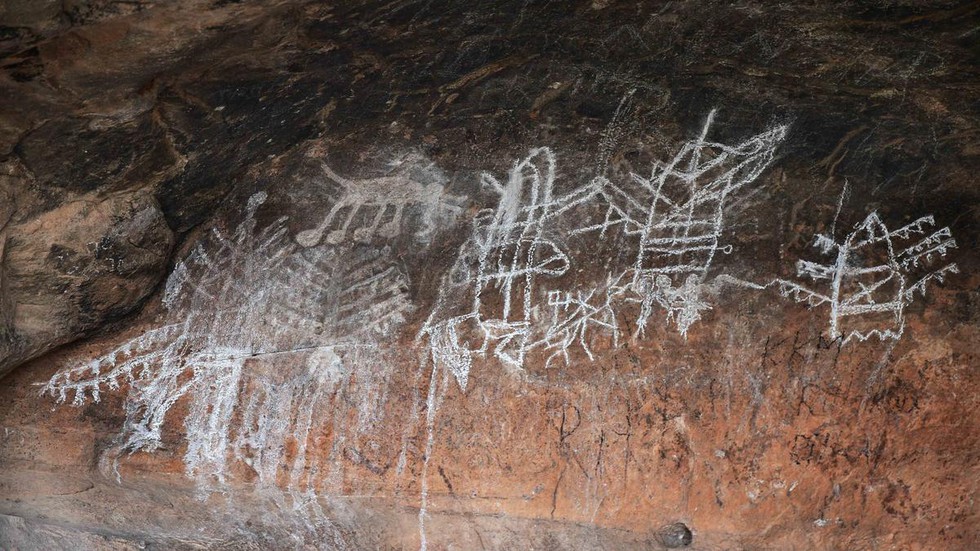The rock art site at Pathimalai in Kumittipathi, near Coimbatore city, is home to ancient cave paintings that provide insights into the lives of early inhabitants of the region. Despite their historical significance, these artworks face threats from vandalism and neglect.
Importance of Kumittipathi Rock Art
- Age and Significance: Estimated to be around 3,000 years old, these paintings offer glimpses into the culture and activities of prehistoric people in the Kongu region.
- Unique Features: Unlike most rock art sites in Tamil Nadu, the paintings at Kumittipathi are situated inside a cave rather than on rock shelters.
- Subjects Depicted: The artworks portray various scenes including an elephant, possibly indicating ancient practices such as elephant trade, along with human figures, animals, and chariot-like formations.
Interpretations and Analysis
- Expert Opinions: Rock art experts like K.T. Gandhirajan suggest that the paintings may depict daily life activities or religious worship rather than just hunting scenes.
- Archaeological Insights: R. Poongundran proposes that the figures resembling a chariot could actually represent a peacock, possibly associated with local religious beliefs.
- Historical Context: The presence of a nearby Murugan temple and megalithic burial sites suggests a connection between the artworks and ancient religious practices dating back to the 5th Century BCE.
Threats and Conservation Efforts
- Vandalism: The cave paintings are at risk due to vandalism, with instances of graffiti and damage caused by miscreants.
- Neglect: Despite appeals from locals, historians, and archaeologists, the site lacks adequate protection and conservation efforts from the Archaeology Department and district administration.
Conclusion
The Kumittipathi rock art site stands as a valuable cultural heritage, shedding light on the ancient history and traditions of the region. Urgent steps are needed to safeguard these precious artworks for future generations.
Multiple Choice Questions (MCQs):
- What distinguishes the rock art site at Kumittipathi from others in Tamil Nadu?
A) It features paintings of elephants.
B) It is located inside a cave.
C) It primarily depicts hunting scenes.
D) It is situated deep inside forests.
Answer: B) It is located inside a cave. - According to rock art expert K.T. Gandhirajan, what makes the Kumittipathi cave paintings unique?
A) They are drawn with white pigments.
B) They depict scenes of elephant trade.
C) They are believed to be over 5,000 years old.
D) They are situated atop a rocky hillock.
Answer: A) They are drawn with white pigments. - What interpretation does archaeologist R. Poongundran offer regarding the figure resembling a chariot in the paintings?
A) It represents a peacock.
B) It symbolizes ancient trade routes.
C) It signifies hunting activities.
D) It depicts religious rituals.
Answer: A) It represents a peacock. - What threat do the Kumittipathi cave paintings face?
A) Overexposure to sunlight
B) Natural erosion
C) Vandalism and neglect
D) Flooding
Answer: C) Vandalism and neglect.
